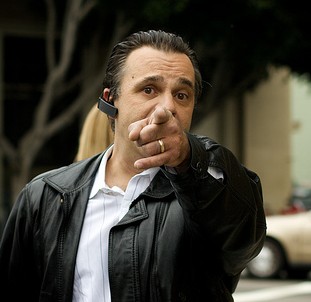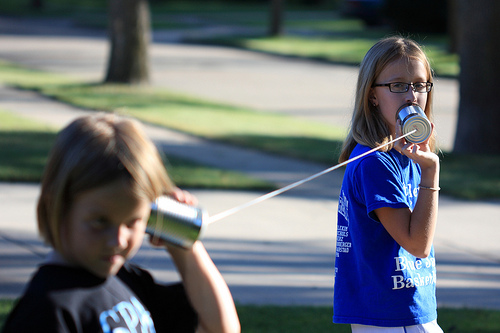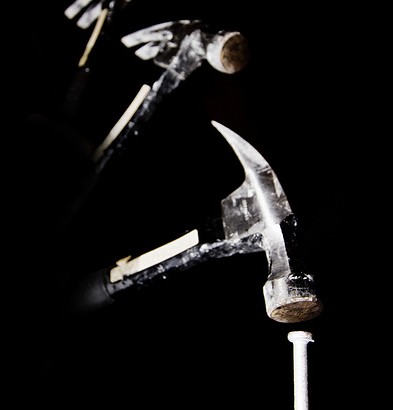The Nemesis Character Type in Your Story
Novels need a cast of characters, and developing rich secondary characters is a pillar of novel construction that cannot be ignored.
In this post and my next one, we’re going to take a look at the three basic types of characters in the supporting cast for your novel. You might have many secondary characters that play these roles, but there are three basic types—meaning, these characters serve a specific purpose in relation to your protagonist.
As I’ve said repeatedly, novels are centered on a protagonist pursuing some visible goal, and this group of characters appears in the novel to impact that in some way. But characters, just like real people, aren’t always so simply defined in motive, purpose, or intent.
Some characters embody all three types sometimes. But if you find you don’t have these types in your story, consider adding them. For, most of the great novels and movies have a strong supporting cast of characters. If we keep in mind that novels should be a reflection of real life, we will have a cast of characters that play the same kinds of roles as the people in our lives.
The Nemesis
I’m going to start with what might be considered the easiest or most obvious of secondary character types, but instead of thinking of a stereotyped “bad guy,” which not all novels have or should have, think more in terms of anyone who stands in the way of the hero reaching his goal.
This means even an ally or friend—someone who thinks she has the hero’s best interests at heart—can be a nemesis. Some call such a character an antagonist. I like that term because it reminds me of antagonize (for obvious reasons). Anyone who antagonizes or causes “agony” to your character can be an antagonist.
One character might wholly be opposed to your hero the whole novel through. Another might start off as an ally and switch camps, which is a very common plot structure. But a character that is in actuality an ally or friend would not be considered a “nemesis.”
The Many Faces of the Antagonist
We all have moments in which we disagree with someone we love, or fight with them. Doesn’t mean we’re their enemy or opponent at heart. Likewise, an antagonist may not even realize she is one, but the reader does, and her role in the story makes her one. Needless to say, most antagonists in real life (and, one hopes, in novels too) really believe they are doing what’s right and even best for the protagonist (however misguided we may feel she is).
An antagonist could be a real evil, mean character, or she could be an overly sweet and well-meaning old lady neighbor. There is no typical “face” for a nemesis. If you keep in mind the definition of this type of character—that she is in the story to stand in the way of the hero reaching his goal—you will see the potential for lots of different “faces” in your novel. There are few things worse in our lives than “well-meaning friends” who really want to . . . persuade us in a different direction. There’s that word again—persuade—which I spoke at length about in the last post.
If you think in terms of the antagonist hoping, trying, or wishing to persuade your hero from the direction he is going in, you have an antagonist.
Motive Defines the Character Type
But . . . it’s important to consider motive. Again, an ally or friend may try to persuade your hero to give up his goal—for some good reason. Maybe his wife doesn’t want him to risk his life on a dangerous mission because she loves him and doesn’t want to lose him. Well, in that moment, she is his antagonist, in the way of his goal. But as a character type, she is an ally. Why? Because she wants him to succeed. She wants to help and support him. Yet, she is going to be an obstacle for him in the story if she is blocking his way.
Ah, you may be thinking, all this “character type” stuff is not so cut-and-dried. It’s not. People are complex, fickle, selfish, self-sacrificing, fearful. Depending on the situation and the mind-set when something happens, each of us might react in an unpredictable way. One day we might love dogs and the next day hate them (after some mutt runs off with our lunch sack at the park). Because of a migraine, we might be mean and disagreeable to someone we love and have never said an unkind word to previously.
Work Hard to Create Complex Characters
Life is messy, difficult, stressful. Everyone reacts to stress differently and often inconsistently. We may want to make our role as writer easier by manufacturing consistent, predictable, stereotyped characters, but I would like to encourage you not to. Push yourself to create really believable characters that are complex and sometimes unpredictable.
If you can create a moment in your novel in which the hero and the antagonist agree on something, and realize what they do have in common, you can have a powerful moment. Likewise, those moments in which the antagonist is actually vulnerable and/or empathetic can go a long way to making your story feel authentic.
Having one or more antagonists in your novel is so useful in many ways. By providing opposition, the hero can voice and demonstrate what he is passionate about, what he’s willing to risk, why he’s after that goal. Nemesis characters provide the means to amplify and showcase the themes in your story, for they often take the opposing view, and having clear, well-built themes in your story is a corner pillar of novel construction.
Rethink the Stereotype
Why am I saying all this? Because the temptation, especially with the nemesis character type, is to defer to stereotype. To make bad guys really bad to the point that they are comic-book types, which is what I see nine times out of ten in the manuscripts I critique.
If you struggle a bit with this type of character, read my post on bad guys here. The best villains in literature, to me, are the ones you almost like (but would never admit it!) and find fascinating. They are usually complex, full of inner conflict, but have moments of grace or kindness that seem contradictory. Those moments, though, turn a predictable stereotype into a riveting, believable nemesis.
So, I hope this all gets you thinking about the antagonist character types you may have in your novel. Whether you have one specific nemesis for your protagonist, or have multiple characters that play that role, the nemesis character does not want your hero to reach his goal. He himself should have needs, fears, and goals he is striving for based on what he believes. He may be evil, greedy, psychotic, or a sociopath. Or he might instead be a friend who is fearful of losing something precious to him, and who believes with all his heart the protagonist must not reach his goal. It depends on your story.
If you don’t have anyone opposing your protagonist, spend some time thinking how to create someone. Make his needs and goals clash with your hero’s. Make him believe he is right and has the right to his belief. Great novels are all about tension and conflict, and without opposition to the protagonist, you won’t have a story worth telling.
Next week we’ll look at the next major character type in story structure. For now, share some thoughts about your antagonist in your novel. What is he or she like? What does she want in life more than anything, and how does her goal and need cause opposition for your hero?
Inspection checklists:
Inspection Checklist 1-concept with a kicker
Inspection Checklist 2-protagonist with a goal
Inspection Checklist 3-conflict with high stakes
Inspection Checklist 4-theme with a heart
Inspection Checklist 5-Plots and Subplots in a String of Scenes
Feature Photo Credit: Jeremy Brooks via Compfight cc












I’m curious, then, about a character like Cordelia on Buffy the Vampire Slayer. I would have considered her a nemesis, because she was definitely anti-Buffy but was not a villain. However everytime Sunnydale was threatened by the actual villain, Cordelia helped Buffy and the gang. So, is she a nemesis or not (because she didn’t stand in the way of the most important goal)?
Wow, C.S. You are a checklist MACHINE. I love it, and am so grateful to be a recipient of your knowledge! I’ve had to learn over the years to NOT make my villians one-dimensional — carboard baddies, if you will. The best villians are the ones who are sympathetic. We may not approve of what they’re doing, but we understand their motivation. Thanks!
Well said!
I think the important idea to remember when creating antagonists/villains/nemesises (Nemesii?) is that, from their perspective, they are the hero. Unless you are writing a comic booky “Going to take over the world”-type character, no one sits there thinking that they are evil.
It can be easy to look at your story from only the protagonist’s point of view, and see the villain as nothing more than that. The readers may see him/her that way, but as authors need to remember to see the antagonist’s perspective just as clearly as their hero’s.